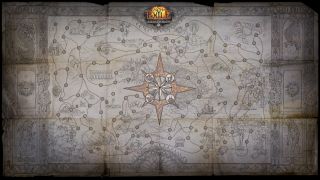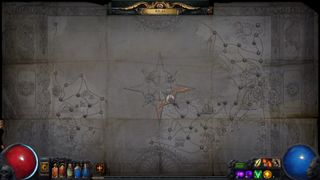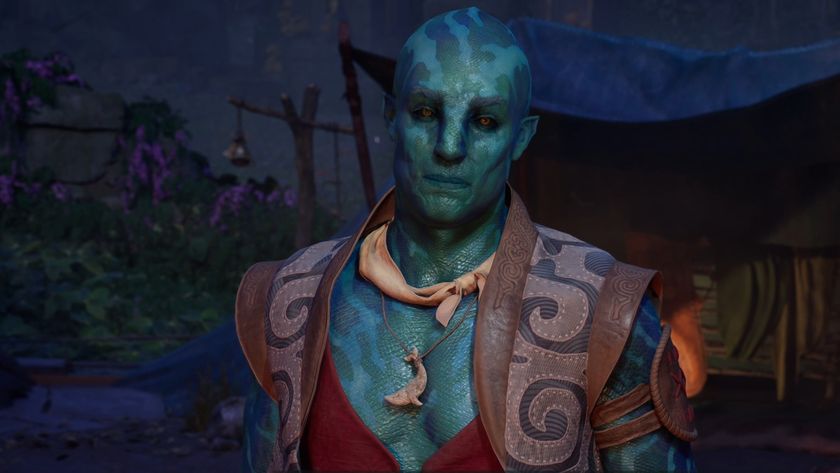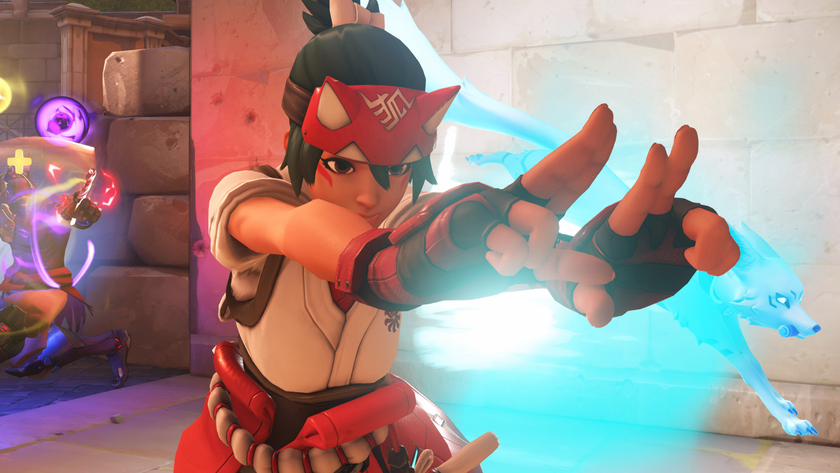On September 2nd, Path of Exile will get its sixth major expansion in three years, Atlas of Worlds. The free-to-play ARPG has changed a lot over that time as new systems, like its three-month league system, were added and story chapters continued to unfold. But for Atlas of Worlds, developer Grinding Gear Games has focused in on improving a very specific part of its dungeon crawler: the end.
Online RPGs like Path of Exile often live or die based on their end-game content, what’s left after you’ve finished the story and done all the quests. World of Warcraft shifts its focus to raiding, while Guild Wars 2 is more about PvP. In some way, seasons in games like Diablo 3 and Path of Exile are specifically designed to make sure players don’t dwell too long in the end-game, setting everyone back to square one if that’s the way they want to play.
Until Atlas of Worlds, Path of Exile’s end-game has been made up of randomly dropped items called maps. When you use a map (really a small stone with a rune on it) you open a portal to a new level. Different maps bring you to different themed levels, but the actual layouts of those levels are procedurally generated for replayability. Within those maps, even higher level maps can drop, and so on and so forth as you work your way up a pyramid-shaped tier list of 70 different maps.

But despite the tiers, Path of Exile’s end-game was an unguided experience. Maps would drop, you’d run them and hope for more to drop, then repeat. That’s exactly what Atlas of Worlds is trying to fix. It gives shape and context to Exile’s maps, while also adding a whopping 30 more to find. Instead of tiers, Grinding Gear has laid out all 100 maps on a large chart called the Atlas of Worlds that each player uncovers by progressing down snaking paths of connected maps.
There are four maps you can find initially, each starting in a different corner of the Atlas. As you play on any map, you have a chance of finding maps adjacent to any of the ones you’ve already completed. The Atlas has a bunch of different winding paths that all eventually connect up to each other in one way or another, and finally end in four larger circles around a compass rose in the center. Each of these inner spots has a special boss that will drop a key. Collect all four keys and you can fight the boss at the center of the Atlas, which is being left as a surprise for players to find for themselves.
This amount of structure is a pretty huge change to the formless system the maps took on before Atlas of Worlds, but Grinding Gear told me it wanted to make sure that players could ignore the Atlas entirely if they didn’t like it, not wanting to alienate current players. If you just want to play like you were before, you’ll still be completing maps, finding more that drop, and generally seeing them getting more difficult—you just won’t know the method behind it all unless you consult the Atlas. So while it adds some welcome structure, it doesn’t impose itself upon you.

Another big change is that the tier system doesn't look like a pyramid anymore. Sure, you need to progress from one map to the next, with the inner maps being harder than the outer ones, but the bottom tier (made up of the easiest maps) is no longer the biggest section. Grinding Gear told me it realized having the most maps be in the lowest-level tiers of the Atlas didn’t make any sense, because players will spend most of their time replaying harder areas anyway. The distribution now looks more like a bell curve than a pyramid, with older maps being readjusted to fit in new spots.
The biggest gaming news, reviews and hardware deals
Keep up to date with the most important stories and the best deals, as picked by the PC Gamer team.
Atlas of Worlds also presents players with what is essentially a “final boss” to defeat in each three month season. The length and timing of the Atlas has been balanced so that the average casual player, playing Path of Exile maybe one to two hours a night, could start from nothing at the beginning of a season and reach the end of the Atlas before it's over. Doing so may be difficult, and people who play more frequently will probably do it much faster than that, but that’s the experience in mind.

But Grinding Gear said it’s not all about racing to the center, you’ll still want to replay maps along your way. You may be looking for an special item only available on a certain map, hoping for a specific map drop to unlock some of the Atlas’ rarer, more unique levels, or might just have a favorite level you enjoy more than the others, so replayability is important. To support this, maps can be given modifiers to make them harder, give better loot, or a selection of other effects. Taking full advantage of the Atlas’ layout, some of those modifiers will have an AOE ring around them with any other maps in that ring also getting the bonus.
If you’re relatively new to Path of Exile, Atlas of Worlds may only bring a very subtle change—apart from some performance improvements that finally allow the game to take advantage of multi-core CPUs. But Path of Exile’s most dedicated players will have lots of new story, levels, and crafting to sink their teeth into. It's an update tailor-made for the game’s most enthusiastic players.

Avowed's in-dialogue glossary isn't that new, really—it's just somehow not industry-standard yet, though it could solve the 'amnesiac/prisoner RPG protagonist' problem forever

Avowed brings back a joke pistol from Pillars of Eternity that literally tells you not to use it, but you can immediately upgrade it into a killer hand cannon
Most Popular




